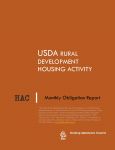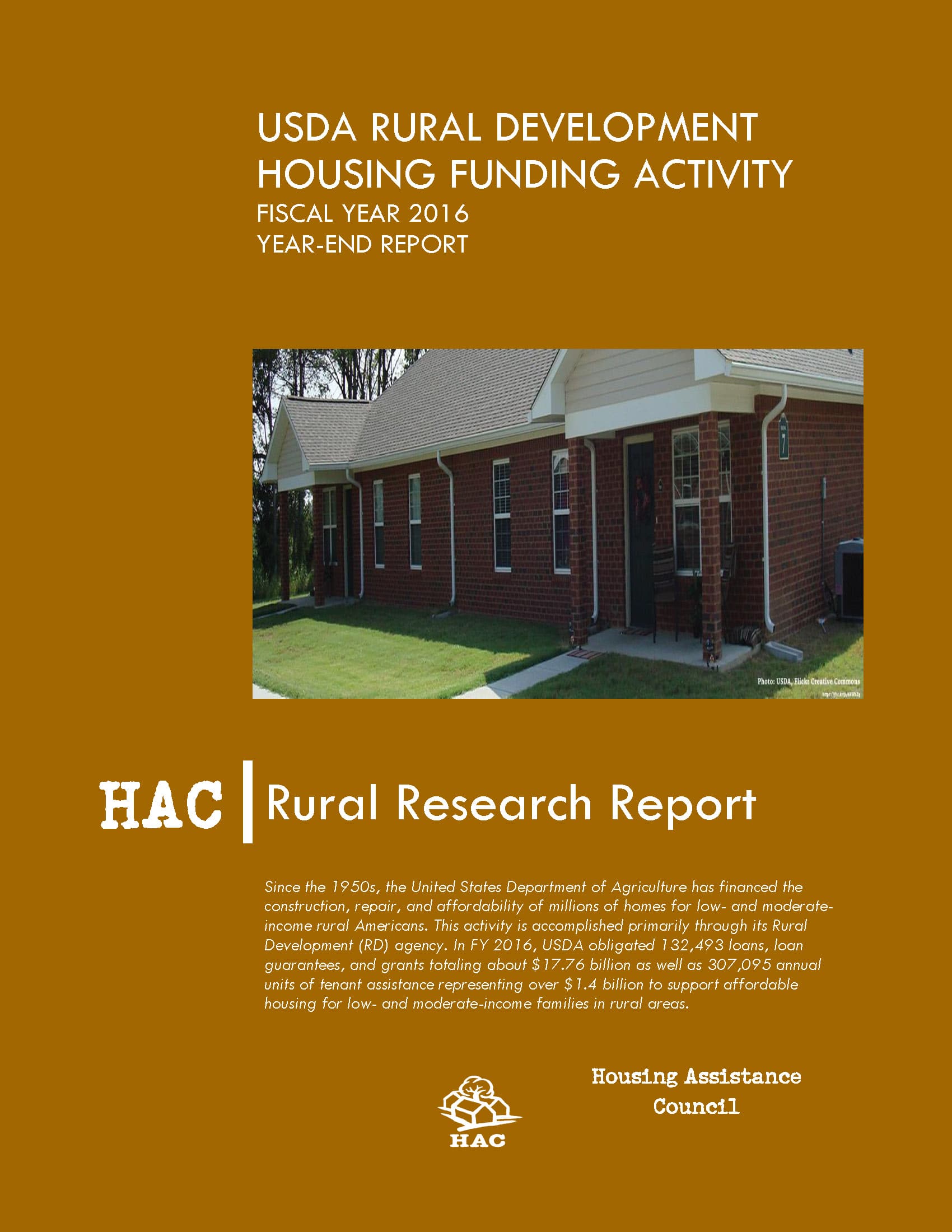HAC News: August 17, 2017
HAC News Formats. pdf
August 17, 2017
Vol. 46, No. 17
Worst case housing needs increased, HUD reports • List of tribes for Cobell land buy-back program reduced • HUD suspends Small Area FMR rule requirement • Funds offered for Fair Housing and Family Self-Sufficiency programs • USDA RD offers to extend conditional commitments for preservation debt deferrals • Farias and Rackleff confirmed for HUD posts • Fair housing data guide published for local advocates and planners, webinar scheduled • Rural Voices looks at creative placemaking
HAC News Formats. pdf
August 17, 2017
Vol. 46, No. 17
Worst case housing needs increased, HUD reports. In the U.S. in 2015 there were 8.3 million households with “worst case housing needs”: very low-income renter households who did not receive government housing assistance and who paid more than one-half of their income for rent, lived in severely inadequate conditions, or both. Based on 2015 American Housing Survey data, Worst Case Housing Needs: 2017 Report to Congress states that worst case needs dropped from a record high 8.48 million in 2011 to 7.72 million in 2013, then rose again in 2015. Nationwide, only 62 affordable units are available per 100 very low-income renters, and only 38 per 100 extremely low-income renters. Reasons for the increase, the report says, include “a notable shift from homeownership to renting, … a modest level of household formation and a widening gap in rental assistance relative to need.”
List of tribes for Cobell land buy-back program reduced. The Interior Department announced on July 31 that it will offer its Land Buy-Back Program for Tribal Nations to 20 tribes, rather than the 70 previously eligible. The program was established as a result of the settlement in the Cobell lawsuit, which charged the federal government with mismanagement of Native American funds. It pays Native Americans for their interests in parcels of land and returns the land to tribal ownership. Interior “may revise the schedule or add locations [tribes] as capacity and resources allow”; from an original pool of $1.9 billion, $540 million remains. Interested landowners must submit documentation by November 27 to be eligible. For more information, contact Interior’s Trust Beneficiary Call Center, 888-678-6836.
HUD suspends Small Area FMR rule requirement. A regulation finalized in November required PHAs in 24 metro areas to use SAFMRs for the Housing Choice Voucher program. SAFMRs are based on zip codes rather than entire metro areas and are intended to increase access to high opportunity places (see HAC News, 11/21/16). An August 11 letter from HUD informs PHA directors in 23 of the 24 metro areas that they will not be obligated to use SAFMRs until October 1, 2019, rather than the original October 1, 2017 implementation date. (Because of a legal settlement, the requirement remains in place in the Dallas-Plano-Irving, Texas Metro Division.) Other provisions of the November rule remain in effect, and PHAs may still choose to use SAFMRs voluntarily.
Funds offered for Fair Housing and Family Self-Sufficiency programs. Under the Fair Housing Initiative Program, fair housing organizations can request funding for three different types of activities: Fair Housing Organization, Education and Outreach, and Private Enforcement. The deadline is September 18. For more information, contact Myron Newry, HUD, 202-402-7095. Family Self-Sufficiency awards are available only for PHAs and tribes/TDHEs currently administering FSS programs. The deadline is September 15. For more information, contact Tremayne Youmans, HUD.
USDA RD offers to extend conditional commitments for preservation debt deferrals. Some owners of Section 514 and 515 properties have received RD commitments (with conditions) to defer debt on their loans, using the Multifamily Preservation and Revitalization program. An Unnumbered Letter (June 8, 2017) explains that if RD does not have sufficient MPR funds available to honor these commitments, property owners may request extensions, as well as temporary suspensions of monthly debt service payments, for up to 24 months. For more information, contact an RD state office.
Farias and Rackleff confirmed for HUD posts. On August 3, the Senate confirmed Anna Maria Farias as HUD’s Assistant Secretary for Fair Housing and Equal Opportunity and Neal Rackleff as Assistant Secretary for Community Planning and Development (see HAC News, 6/22/17 and 8/3/17). Pamela Hughes Patenaude has not yet been confirmed as HUD Deputy Secretary, although the Banking Committee recommended approval in June (see HAC News, 6/22/17).
Fair housing data guide published for local advocates and planners, webinar scheduled. Using Data to Assess Fair Housing and Improve Access to Opportunity is intended to help community organizations and local governments use data from the Census Bureau and other secondary sources. The guide provides urban examples. It will be featured in a webinar on August 24 by the guide’s publisher – the Urban Institute – and others.
Rural Voices looks at creative placemaking. Rural Placemaking: Making the Most of Creativity in Your Community is the summer issue of HAC’s quarterly magazine. Articles from around the country show how, through creative placemaking, the economic, educational, and social impact of the arts can complement affordable housing efforts.
|
Need capital for your affordable housing project? |
|
HAC offers September training on single-family development and 502 packaging Rural Affordable Single-Family Housing Development: A Primer Section 502 Packaging Training for Nonprofit Housing Developers For more information, contact Shonterria Charleston, HAC, 404-892-4824. |



